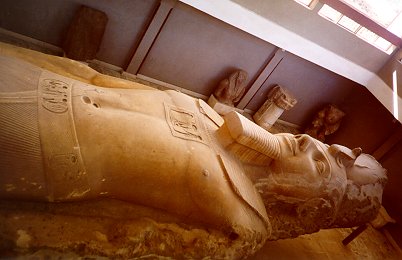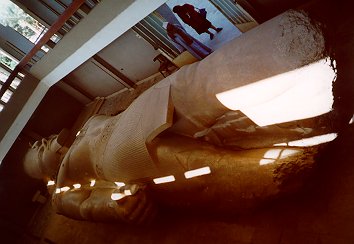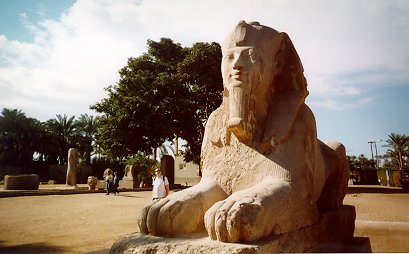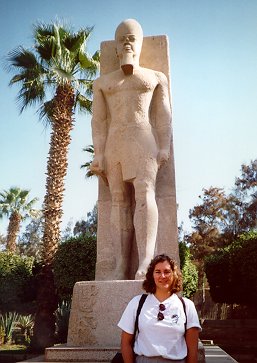
Memphis
![]()
| Memphis was the capital city of Egypt for most of the Pharaonic period. It is said to have been founded by the 1st-Dynasty ruler Menes (Aha). A more ancient name for the city of Memphis was Ineb-hedj (White Walls) which probably referred to the appearance of the fortified palace of one of the earliest kings. Memphis itself has largely vanished. The remains of early Memphis lie beneath thick deposits of Nile alluvium and much is below the water table. Its former glory is now apparent only in its 'City of the Dead', the necropolis, or cemetery, of Saqqara. |
![]()
 The fallen
Colossus of Ramesses II is one of the most
commonly visited features of the Memphis site.
The fallen
Colossus of Ramesses II is one of the most
commonly visited features of the Memphis site.
 The right side of the
fallen Colossus of Ramesses II.
The right side of the
fallen Colossus of Ramesses II.
 The 18th century BCE
Alabaster Sphinx left exactly over the place
from which it was excavated.
The 18th century BCE
Alabaster Sphinx left exactly over the place
from which it was excavated.
 A Statue of
Ramesses II
(?) wearing the White Crown of Upper Egypt.
A Statue of
Ramesses II
(?) wearing the White Crown of Upper Egypt.
© All pictures are Copyright 1998 - 2001 Grisel Gonzalez